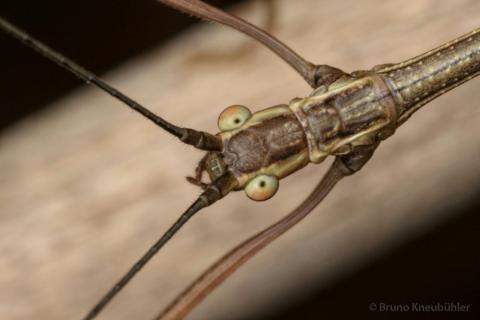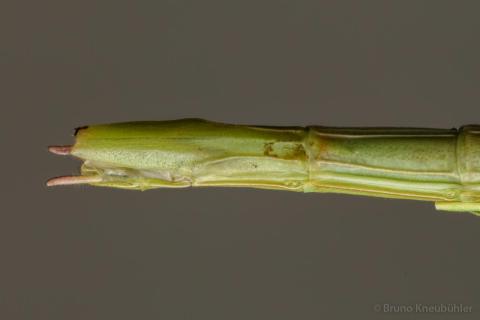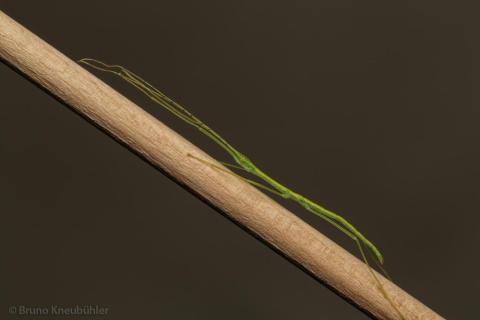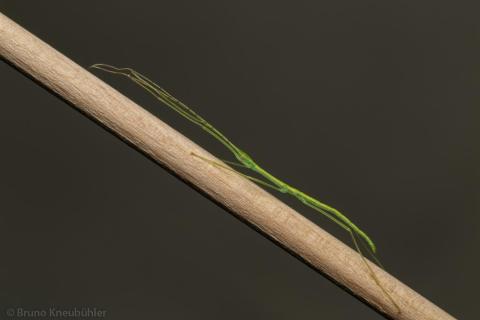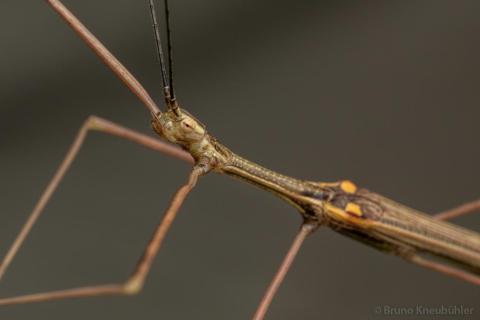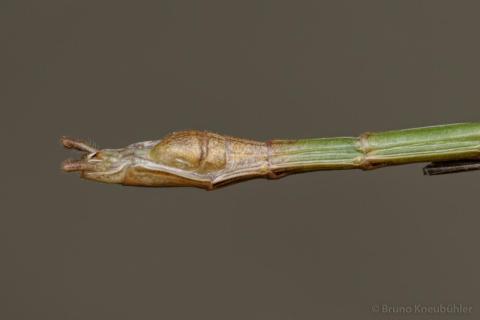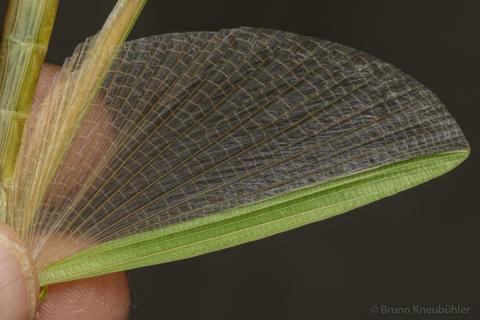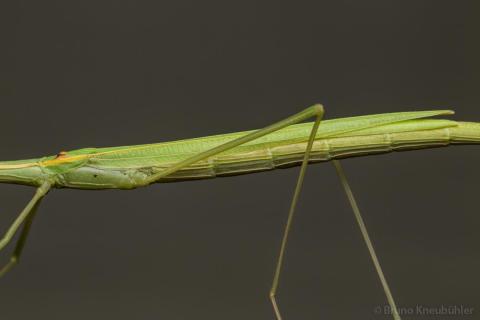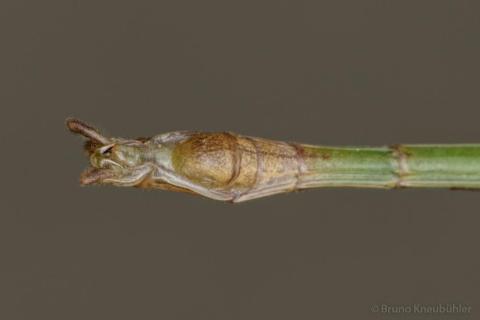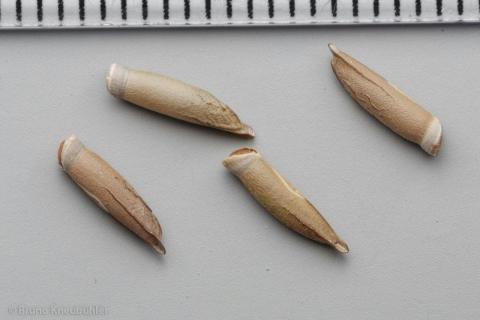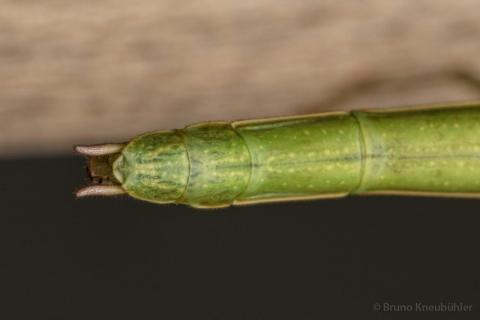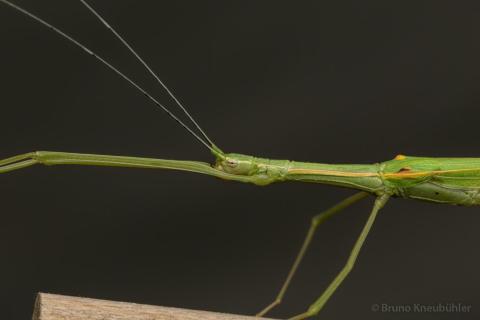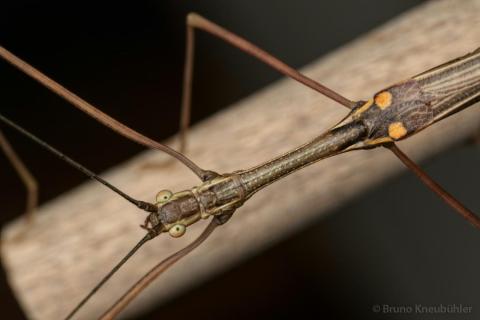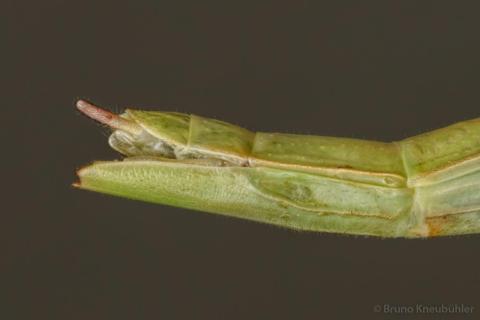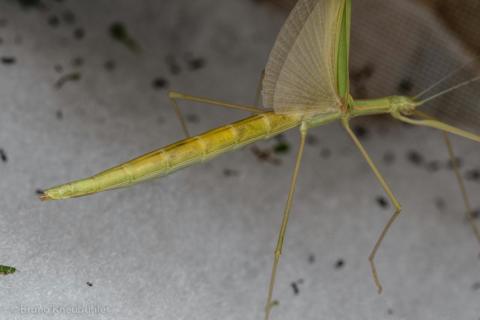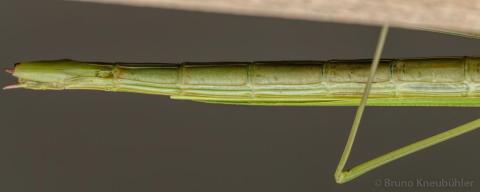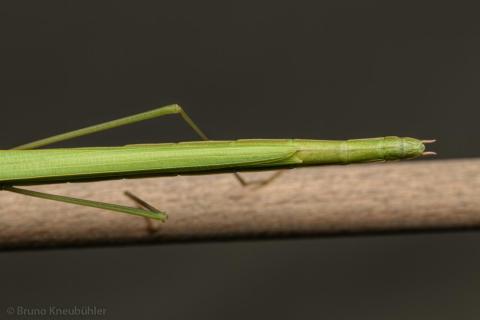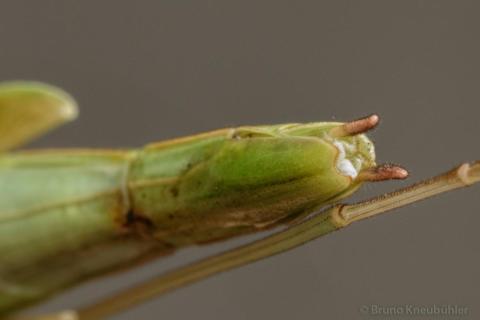
Genus
Species
CLP
826
Culture status
In culture
Foodplants
Privet (Ligustrum spp.)
Hazel (Corylus avellana)
Beech (Fagus sylvatica)
Breeding notes
(by Bruno Kneubuehler)
General Informations
- provenience: Me Linh Biodiversity Station (Vietnam)
- ID by Joachim Bresseel (BE)
- taxonomic evaluation by Joachim Bresseel (BE)
- F1 CB culture in 2016 by Bruno Kneubuehler (CH)
- further taxonomical informations ➤ Phasmida Species Files
- this is a pure culture, and serious breeders are requested to avoid mixing this culture with similar populations from a different provenience. When spreading this culture to other breeders, then always use the full name with provenience
- this culture has the number CLP 826 (Online Phasma Culture List)
Females
- medium-sized, fully winged phasmids
- body length 9 cm
- females coloration does not vary considerably between specimens
- mainly light green
- long antennae
- fully developed wings
- yellow lateral stripe, along thorax and wings
Males
- slender phasmids
- body length 7 cm
- males coloration does not vary considerably between specimens
- upper side mainly brownish, lower side green
- yellow dot on forewings
Nymphs
- freshly hatched nymphs are green
- on how to distinguish between male and female nymphs
Eggs
- 8 x 2 mm
- brown, matt
Food Plants
- privet (Ligustrum spp.)
well accepted by nymphs and adults - hazelnut (Corylus avellana)
well accepted by nymphs and adults - beech (Fagus sylvatica)
moderatly accepted by nymphs and adults
Breeding, Behaviour
- easy to breed
- active mainly during the night
- they often behave very frantic when being touched and handled
- a defensive spray has not been observed
- eggs are stuck into filerwool (used in fish keeping), spread a layer of filter wool on the cage bottom
- about 5 - 8 per female and week
- incubation (Cup-Incubation-method, medium damp vermiculite) about 7 months at 20 - 24 °C (F1)
- stick the eggs into the vermiculite, make sure the egg lid is up
- eggs of this species are not prone to get mouldy
- nymphs hatch during the night
- it is quite common that some phasmid nymphs hatch weeks after the first nymphs - from the same batch of eggs
- a humidity of about 65 - 75 % rH seems to be good enough for nymphs and adults
- one can spray them regularly with chlorine-free water, but allow the water to dry up before spraying again
- small nymphs can be kept in a Faunabox (or a similar cage), which shall not be too small
- provide a cage of about 30 x 30 x 30 (cm, L x B x H) for 3 - 4 adult couples
- males will be adult after 3 months (at 20 - 24°C), females after 4 months
Basics of phasmids breeding
- keep only one species per cage, overpopulation is one of the main reasons for breeding failures
- keep nymphs seperate from the adults, mainly to protect them during the crucial moulting phases
- choose the cage big enough. When in doubt, too big is (usually) better than too small
- a ventilator often supports good breeding results, as it seems to increase activity and feeding
- provide enough light, but avoid direct sunlight (overheating)
- try to keep day time temperatures below 25°C
- a nocturnal fall of temperature is natural, and thus advantageous
- do not spray too much, phasmids are no fish ! Allow the water to dry up before you spray again
- minimize disturbances (loud music, commotions, light at or during the night, opening up cages in the morning [often a moulting phase] ect.)




